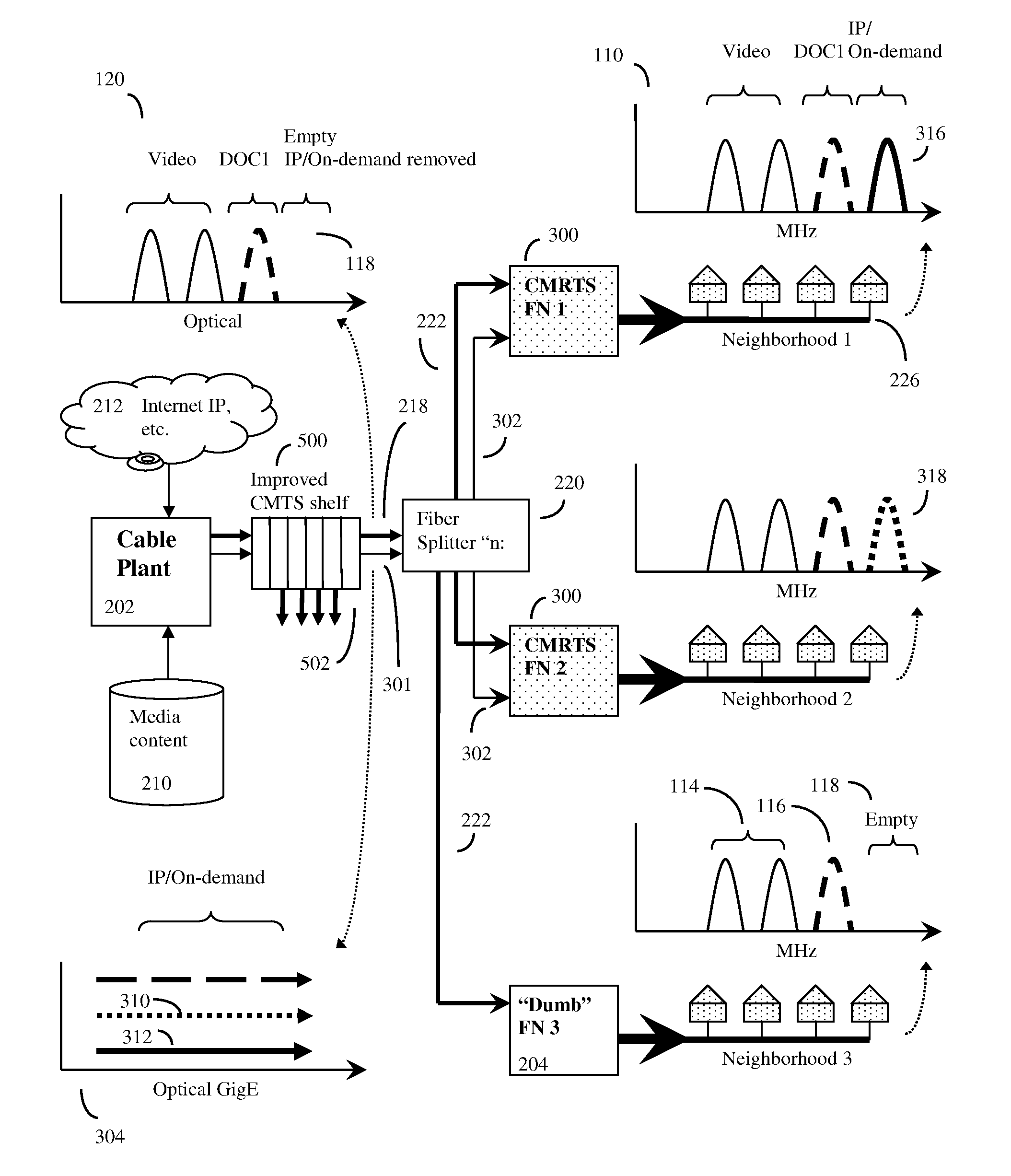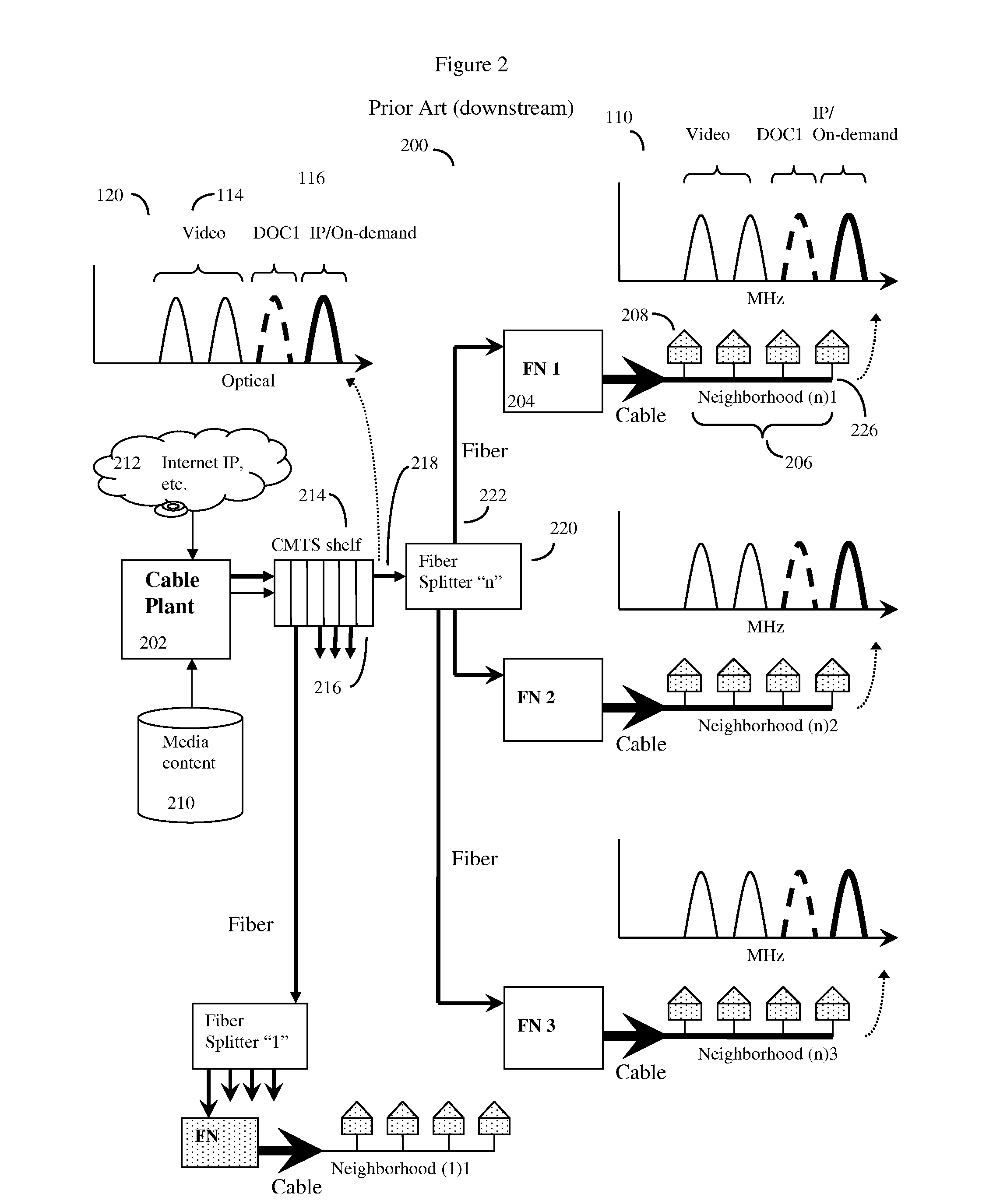Distributed cable modem termination system
a termination system and cable modem technology, applied in the field of distribution cable modem termination system, can solve the problems of limiting the amount of data the 1950's era coaxial cable can ultimately transmit, unable to meet the requirements of the data transmission speed, and inconvenient installation, etc., to achieve the effect of saturating the limited catv bandwidth, high software configurable, and easy saturating the limited bandwidth
- Summary
- Abstract
- Description
- Claims
- Application Information
AI Technical Summary
Benefits of technology
Problems solved by technology
Method used
Image
Examples
Embodiment Construction
[0058]In one embodiment, the invention may be a distributed Cable Modem Termination System (CMTS) for a Hybrid Fiber Cable (HFC) network. This system will typically consist of multiple parts.
[0059]In some embodiments, the system will work essentially independently of the CMTS at the cable plant, and will essentially act to supplement the functionality of prior art CMTS by adding a minimal amount of new equipment at the cable plant. Here, this new equipment at the cable plant cable will mainly consist of a Level 2 / 3 switch, a virtual shelf management system (to be described), and appropriate MAC and PHY devices to send and receive data along optical fibers. The prior art cable plant CMTS continues to operate as before, with the one exception that the cable operator should provide for some empty channels in order to provide space for the new channels provided by the invention.
[0060]In other embodiments, parts of the system will be embedded into an advanced CMTS head with at least a fi...
PUM
 Login to View More
Login to View More Abstract
Description
Claims
Application Information
 Login to View More
Login to View More - R&D
- Intellectual Property
- Life Sciences
- Materials
- Tech Scout
- Unparalleled Data Quality
- Higher Quality Content
- 60% Fewer Hallucinations
Browse by: Latest US Patents, China's latest patents, Technical Efficacy Thesaurus, Application Domain, Technology Topic, Popular Technical Reports.
© 2025 PatSnap. All rights reserved.Legal|Privacy policy|Modern Slavery Act Transparency Statement|Sitemap|About US| Contact US: help@patsnap.com



